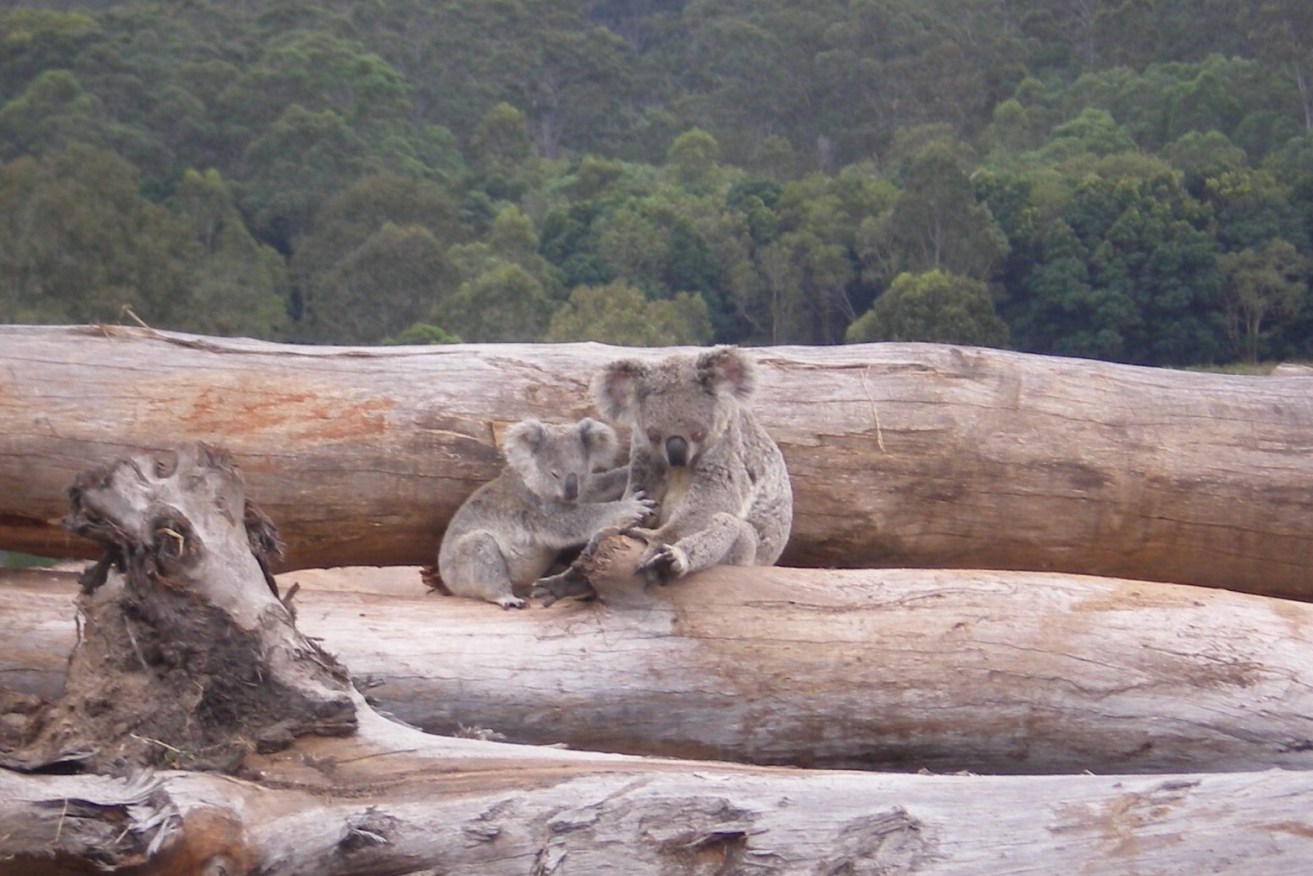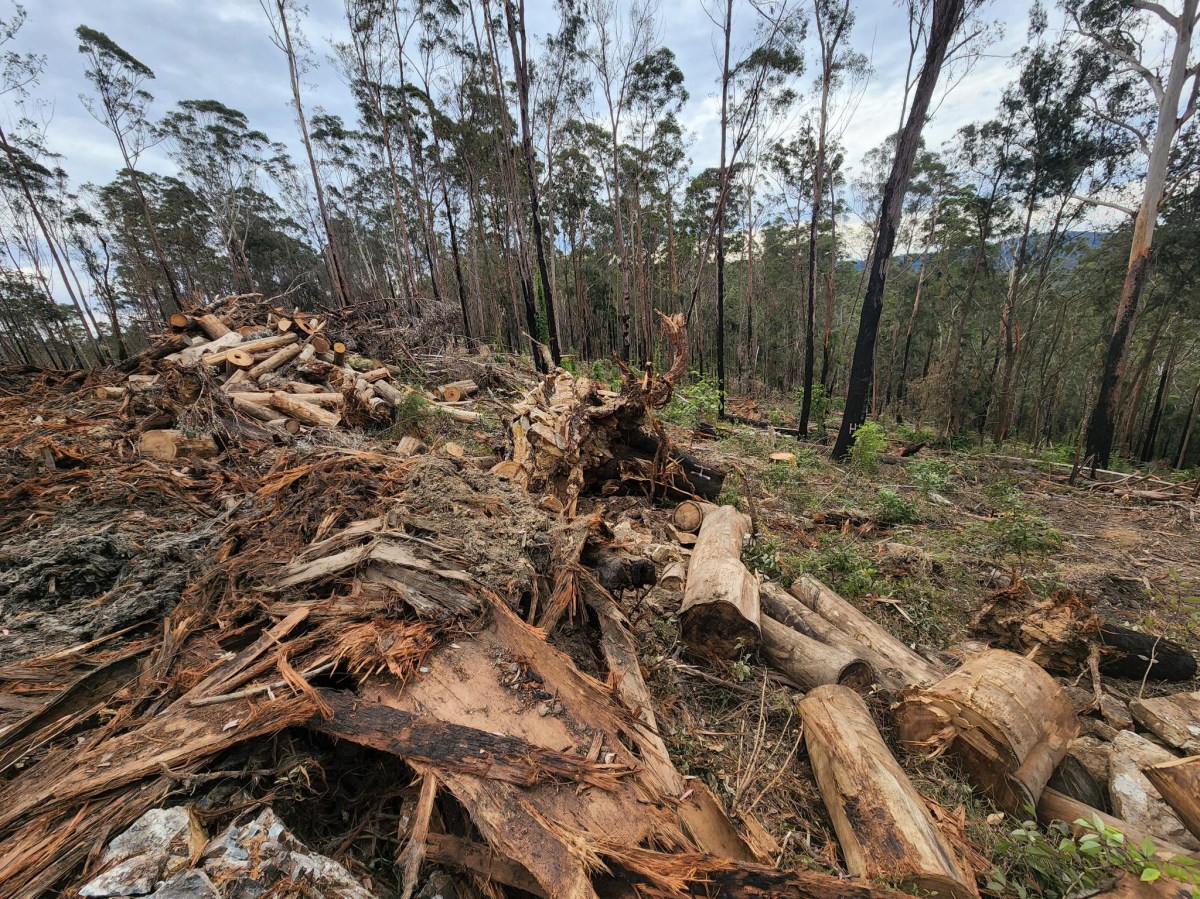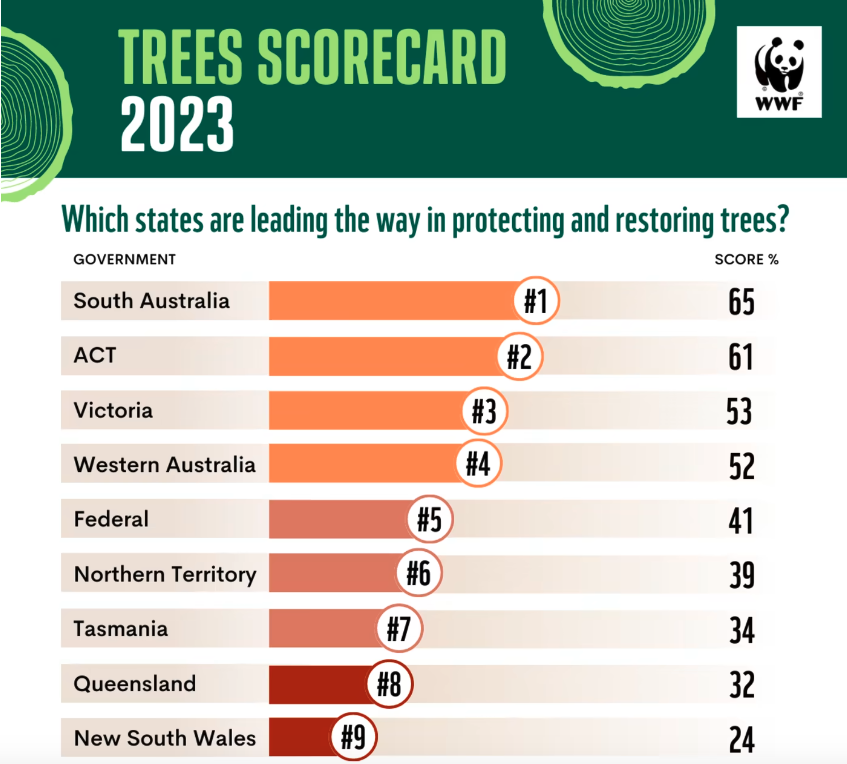SA’s ‘average’ tree score still wins top spot on national list
South Australia is ranked number one in a new national Trees Scorecard while New South Wales – already dragging its feet on returning water to the River Murray – hits rock bottom as it bulldozes more than three trees every 10 seconds.


SA tops national trees scorecard. A koala mother and joey seeking refuge on a bulldozed log pile near Kin Kin in Queensland. Photo: WWF Australia.
Despite scoring an “average” 65 out of 100, SA still topped the nation for having 58 per cent of its forests and woodland intact, strong conservation commitments and banning native forest logging years ago.
But the State Government only scored 25 out of 100 for transparency over land clearing and logging restoration, with the report finding that 32,714 hectares were cleared across the state over the 2018 to 2021 financial years.
That accounts for two trees disappearing every minute, according to the scorecard, which pointed to plummeting numbers of endangered glossy black cockatoos on Kangaroo Island as woodland habitat is cleared.
World Wide Fund for Nature Australia scientists released the Trees Scorecard 2023 today after analysing forest and woodland clearing data alongside national enforcement, protection and government commitments around native forest logging and land clearing.
They called for all states to do better, releasing damning evidence using the CSIRO Habitat Condition Assessment System that shows Australia has “the highest rate of deforestation in the developed world”.
According to the report, Australia is also the only developed nation on the list of 24 global deforestation fronts alongside the Brazilian Amazon, the Congo Basin and Indonesian Borneo.
This is despite Australia signing an agreement in 2021 along with 100 other countries at the 26th United National Climate Change Conference of Parties to end deforestation by 2023.
NSW and Queensland dragged the nation down with ‘very poor’ ratings and ongoing extensive clearing of native forest in the national scorecard.
During the 2018 to 2021 financial years period, NSW cleared 264,170 hectares – equating to more than three trees bulldozed every 10 seconds. The report also found “loggers felled enough native forest trees to fill over 1000 Olympic-sized swimming pools” and there is “no commitment to end native forest logging in sight”.
“It’s estimated that over 70 million animals are killed each year from deforestation across Australia,” the report added.

A national Trees Scorecard points to vast swathes of cleared land destroying habitat for koalas and other native animals. Photo: AAP
Koalas are now listed as endangered in national environmental laws, with up to 62 per cent of the east coast population lost in NSW over the past two decades.
Queensland accounted for one tree every second being bulldozed over the same 2018 to 2021 timeframe, according to the report, clocking the highest rates of land clearing in the nation at 799,668 hectares.
Scientists used satellite images to report that “between October 2022 and February 2023, a cattle pasture developer, cleared 40 hectares, more than 53 rugby league fields, of Esk in Queensland” alone.
And the area cleared by the cattle pasture developer is exempt from state protection laws, the report said.
“Although some states have made progress, New South Wales and Queensland are dragging the nation down,” senior manager Towards to Billion Trees at WWF-Australia Dr Stuart Blanch said.
Blanch added that WWF wants to see the nation shift to being a ‘nation that not only protects and preserves its trees, but also leads the way in sustainable certified timber plantations and conservation”.
The news comes after an expert panel examining SA’s planning system found the “vast majority” of concerns raised are about tree removal.

WWF national Trees Scorecard 2023 ranks SA number one.
Victoria was listed third on the scorecard with 53 out of 100, the report saying “the recent announcement of an end to native forest logging in VIC has provided a welcome boost to VIC’s score”.
The Australian Capital Territory was ranked second with 61 out of 100 after ending native forest logging prior to 1980 but the report said it only has 33 per cent of forest and woodland areas remaining intact.
Despite being immortalised in the ACT’s emblem, the report said the gang-gang cockatoo’s population numbers have plummeted by up to 69 per cent in the past three decades and the birds were officially listed as endangered in 2022 after suffering from habitat loss.
The report also said loss of vegetation means the Northern Territory is one of the last remaining strongholds for one of Australia’s rarest birds of prey, the red goshawk, adding that the species has disappeared from a third of its breeding range.
It also reported that there are now estimated to be fewer than 50 orange-bellied parrots existing in the wild, the birds mainly breed on the west coast of Tasmania, a state where 20,210 hectares of land has been cleared over 2018 to 2021.
“Australia has some of the most unique wildlife in the world, with more than 80 per cent of Australia’s mammals, reptiles and frogs found nowhere else,” the report said.
“From marsupials like the iconic koala and greater glider to distinctive birds such as the swift parrot, our wildlife is truly unique and under real threat from habitat loss.”




